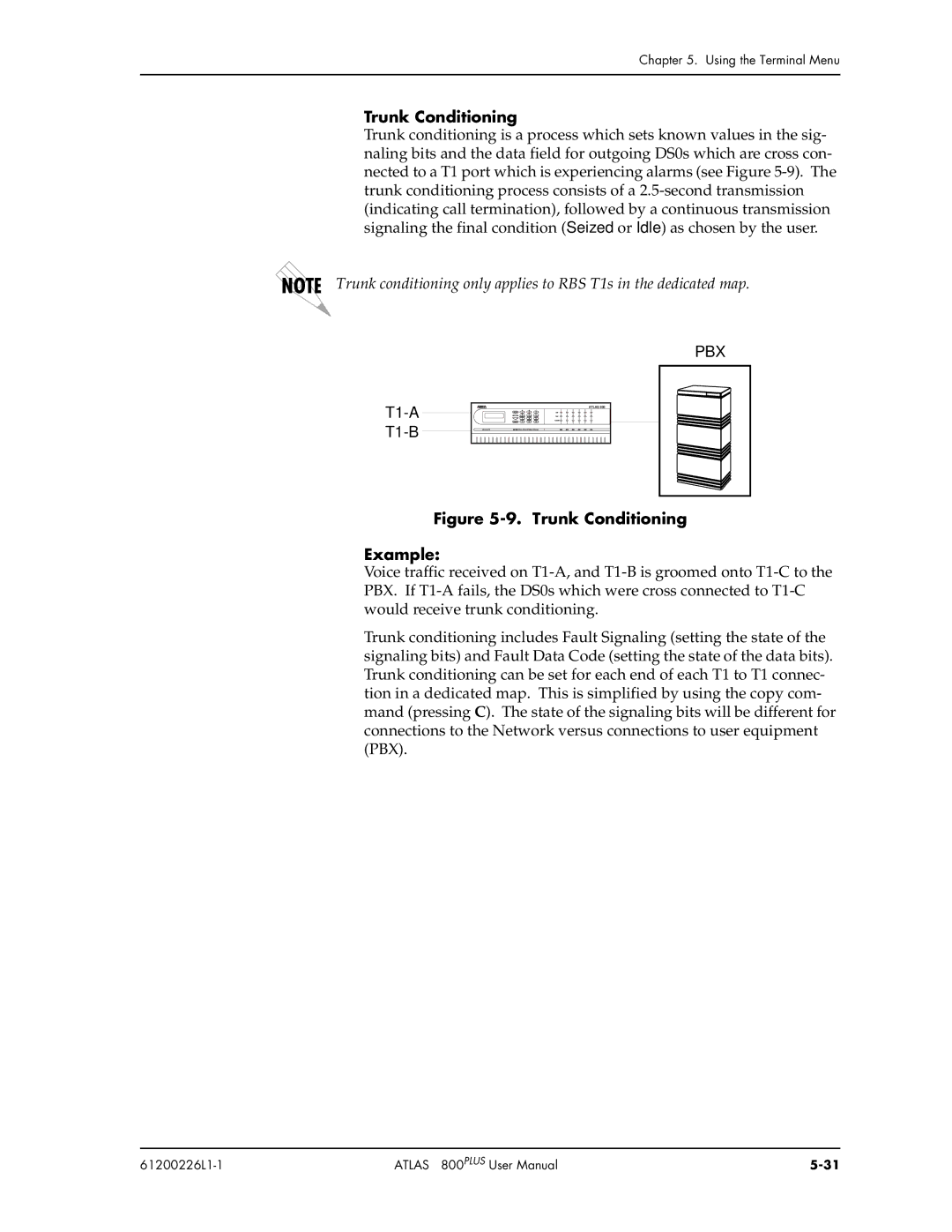
Chapter 5. Using the Terminal Menu
Trunk Conditioning
Trunk conditioning is a process which sets known values in the sig- naling bits and the data field for outgoing DS0s which are cross con- nected to a T1 port which is experiencing alarms (see Figure
Trunk conditioning only applies to RBS T1s in the dedicated map.
PBX
ATLAS 800
Figure 5-9. Trunk Conditioning
Example:
Voice traffic received on
Trunk conditioning includes Fault Signaling (setting the state of the signaling bits) and Fault Data Code (setting the state of the data bits). Trunk conditioning can be set for each end of each T1 to T1 connec- tion in a dedicated map. This is simplified by using the copy com- mand (pressing C). The state of the signaling bits will be different for connections to the Network versus connections to user equipment (PBX).
| ATLAS 800PLUS User Manual |
